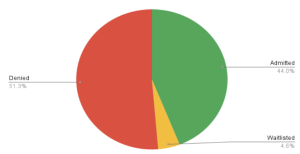Why NYS should implement automatic voter registration
May 16, 2019
There are currently many bills in the New York State Senate and New York Assembly that are calling for New York State to implement some form of Automatic Voter Registration (AVR). Fifteen states and Washington D.C. have approved AVR bills and many other states are set to put forward policies that will implement AVR. After Andrew Cuomo got re-elected in 2018, he signed legislation that would allow for early voting, which permits pre-registration for teenage voters and synchronizes federal and state primaries. Cuomo said that he would consider implementing AVR by 2020, but that he first wanted to modernize New York’s voting system.
AVR enables you to be automatically registered to vote when you interact with any government agency like the DMV. If you get your driver’s license, you have the right to vote. There would be no need to go through the process of registering to vote through your local town hall or online, which is often seen as complicated and unnecessary.
AVR would streamline the process of registering to vote and would take away a lot of the bureaucracy that is involved with voter registration. Additionally, AVR has been proven to dramatically increase the number of people who are eligible to vote which subsequently increases polling numbers across the country. There are usually two main systems for AVR implementation: front-end and back-end. States like California and Colorado have front-end AVR, which means that you can decide at a government agency if you want to register to vote or not.
In states like Oregon and Massachusetts, the application of back-end AVR would automatically put you on a
voter roll if you interacted with any government agency (with the option to opt out by
mail afterwards). An advocacy group called AVR NOW wants to implement a back-end AVR system in New York, but clarifies that any kind of AVR system would be better than nothing. New York State has a conceivably embarrassing record on voter turnout. According to the Fiscal Policy Institute, New York State is ranked 46 in the nation for voter registration in 2018. Only 42 percent of New York’s eligible voters cast a ballot. In 2016, New York City illegally purged 200,000 voters from its rolls due to errors at the New York City Board of Elections.
On election day in 2018, voting machines also crashed all over the city, resulting in New Yorkers waiting in lines for hours just to cast their ballots. New York is also one of 13 states where early voting is unavailable, and the state’s absentee ballot laws are some of the most restrictive in the country. These registration barriers disenfranchise underrepresented voters such as lower-income citizens, young people and people of color, all of which makes New York State less democratic. AVR would give New York State more democracy and it would help New York State be a model for the nation to follow.
Building voting rolls that accurately reflect the population is healthy for any democracy. There is a lot of misinformation about AVR that says that it would favor the Democratic Party and that it would make it easier to commit voter fraud. However, these accusations are false because AVR has been implemented in both blue and red states and there has been no evidence that this has lead to a rise in voter fraud. The only people who are worried about AVR are politicians and interest groups that have been benefiting from low voter turnouts in their districts. If New York is to be a progressive model for the country, the state must modernize their voting system and implement a system of AVR.








